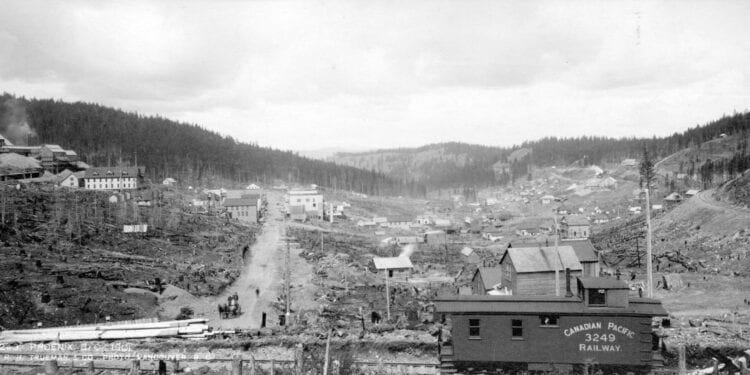Results Supports Mineralisation Model On BC Property
Belmont Resources Ltd (TSXV:BEA) reports that a high resolution UAV (unmanned airborne vehicle) magnetic survey on the company’s Come By Chance property in the historic Greenwood Mining Camp in British Colombia has been completed.
The results of the 5.3 square km survey, flown by Pioneer Exploration Consultants Ltd, have advanced the exploration of the CBC Property to specific locations for the next stage of exploration to ultimately locate the porphyry copper-gold intrusive by diamond drilling.
The Come by Chance (CBC) Property covers an area of approximately 527 hectares and has a history of mineral exploration dating from the late 1890’s which is evident in the many pits, shafts, and adits which were developed in the search for a Phoenix type copper/gold skarn mineral deposit.
Although the Phoenix mineral resource was the major producer, some of the smaller mines were productive from a number of different types of deposits. From 1900 to 1975 production from these 26 principal mines was, in addition to a significant amount of lead, silver, and zinc, 580 Mlbs. of copper and 1.4 Moz. of gold
The CBC Property located three kilometres to the southeast of the Phoenix deposits on a comparative geological trend and basically the same geology, hosts skarn. epithermal, and massive sulphide mineralisation; typical mineralization associated with deep-seated copper/gold porphyry deposits.
Skarn mineralisation with elevated copper values occurs in many locations, with epithermal zones of alteration and quartz veining intersected by a diamond-drill hole situated near the major Eagle Mountain Fault in the southwest.
Belmont’s detailed, low-level magnetic survey of the CBC property has provided a greater indication of the volcanic caldera that was initially indicated by the recently completed Lidar survey.
The magnetic survey also revealed cross-structural locations formulated by major structures. The significance of the cross-structures is primarily that these locations would be prime locations for hydrothermal breccia zones in revealing heterolithic fragments or indicator chemical elements transported from the mineralized deep-seated intrusive porphyritic intrusive responsible for the caldera, the skarns, and other types of mineral deposits.
Two cross-structural locations within the indicated caldera and the magnetic low, are of greater significance. In the north, the small circular Crook Lake with a highly anomalous arsenic and correlative with a cross-structure, may be the most obvious indication of a hydrothermal or collapsed breccia zone.
In the south, one of the three structures formulating the cross-structure, is a southerly trending structure correlating with a magnetic low. This location would be highest priority exploration area.
Belmont says that in addition to the potential of a mineral resource associated with the deep-seated mineral-bearing intrusive beneath the caldera, there is the potential for an epithermal type deposit of a bonanza gold-bearing zone.
This is indicated in the intersection of an epithermal vein by a drill-hole in the Betts area, and in the intersection of a chute of massive sulphides at 175 metres in the 251 metre easterly driven lower Betts adit.












